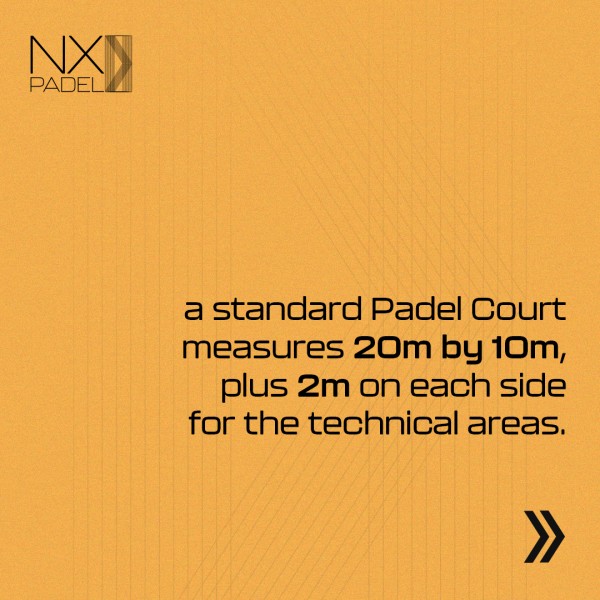
Padel Courts Construction: Navigating Permits and Regulations
The journey to constructing a successful Padel Court begins with understanding the game's regulations and adhering to the right dimensions. According to the International Padel Federation (FIP), a standard Padel Court size is 20 meters in length and 10 meters in width—half the size of a traditional tennis Court. This adherence ensures fairness and consistency in gameplay.
However, your responsibility doesn't stop at dimensions. Before you break ground, securing the necessary permits and authorizations is crucial. Regulations can vary by location, so it's essential to consult local zoning laws and authorities to ensure your project aligns with legal requirements.
Padel Courts Regulation
Before embarking on a Padel Court construction project, it's paramount to have a thorough understanding of the regulations governing their installation. These regulations can vary significantly from one location to another, so it's vital to consult local authorities or a legal expert to ensure compliance. Here, we'll explore key aspects of Padel Court regulations:
Zoning Laws: Zoning laws dictate where you can build Padel Courts. They categorize land usage into residential, commercial, recreational, or industrial zones. Ensure that your chosen location is zoned for sports facilities. If not, you might need to apply for a zoning variance, which can be a complex and time-consuming process.
Building Codes: Building codes specify construction standards to ensure the safety and longevity of the Courts. These codes cover structural requirements, safety features, accessibility, and more. Engaging an architect or engineer experienced in sports facility construction is crucial to meet these standards.
Environmental Regulations: Environmental regulations may require assessments to mitigate any potential impacts on the surrounding environment. This might involve studies on water drainage, noise levels, or the impact on local flora and fauna. Be prepared to submit detailed environmental impact assessments and follow any mitigation measures required.

Padel Court Permits
Securing the necessary permits is a critical step in Padel Court construction. Permit requirements can be complex and time-consuming, varying not only by location but also by the specific features of your project.
Here's an in-depth look at the permit process:
1. Initial Inquiry: Begin by contacting your local planning or zoning department. Explain your intention to construct a Padel Court and inquire about the permits required. Provide details about the project's location, size, and intended use.
2. Site Plan Submission: Prepare a comprehensive site plan that includes the dimensions and layout of the Paddle Tennis Court, fencing, lighting, drainage systems, parking, and any other relevant features. This plan should adhere to the zoning laws and building codes in your area.
3. Application Submittal: Submit your permit application along with the site plan to the relevant local authorities. Ensure that your application is complete and includes all necessary documentation. Be prepared to pay application fees.
4. Review Process: The authorities will review your application for compliance with zoning laws, building codes, and environmental regulations. This process can take several weeks or even months, depending on the complexity of your project and local bureaucracy.
5. Public Hearings: In some cases, especially for larger projects or those that may have significant community impact, you may be required to attend public hearings or meetings to present your plans and address any concerns from neighbors or local residents.
6. Permit Issuance: Once your plans are approved, you will receive the necessary permits to proceed with construction. Ensure that you understand the conditions and timelines specified in the permits.
7. Inspections: Throughout the construction process, inspectors may visit the site to ensure that the work aligns with the approved plans and meets safety and environmental standards.
8. Final Inspection and Certificate of Occupancy: After construction is complete, a final inspection will be conducted to ensure everything is in order. Upon passing this inspection, you will be issued a Certificate of Occupancy, indicating that the Paddle Court is fit for use.
Navigating the intricate world of permits and regulations is a crucial aspect of constructing a Padel Court. Compliance with zoning laws, building codes, and environmental regulations is essential to ensure the safety and sustainability of your project. By understanding the intricacies of the permit process and collaborating with experienced professionals, you can successfully bring a top-quality Fiberglass Padel Court to life. Whether you're a passionate player, an entrepreneur, or a community builder, the world of Padel offers exciting opportunities for growth and enjoyment.









